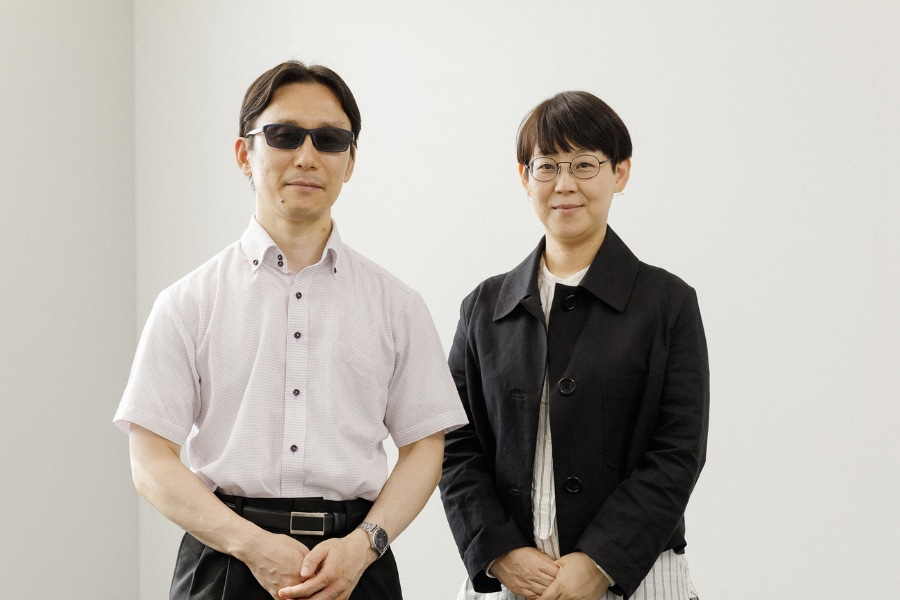
Project members Junya Takahashi and Kyoko Okita (Photo: Kosei Nozaki)
As more people work from home due to COVID-19, employees with disability and employees without disability who work at the Hitachi Group have come together to launch the "Inclusive Future Project" ("I-MIRAI").
This summer marks the third year of this activity, which aims to create inclusive work styles and to improve the accessibility of internal systems. These activities, which began with the sharing of information among just three members with disabilities, have steadily produced positive results that include getting the attention of the president.
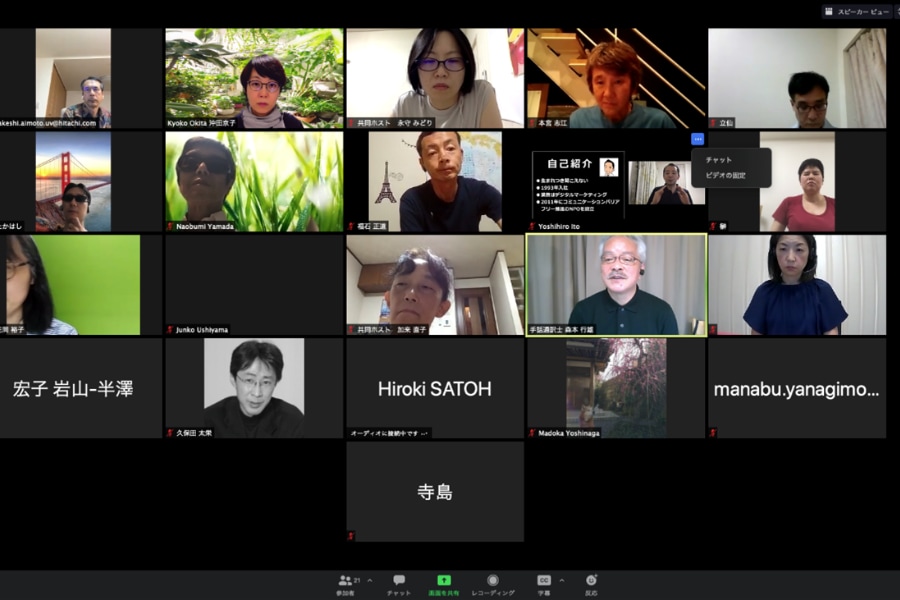
An online I-MIRAI event
Although working from home has become commonplace at Hitachi due to the spread of COVID-19, one issue is that employees with visual or hearing impairments find it difficult to work online.
Hence, in June 2020, I-MIRAI was launched with the aim of realizing a society in which "no one is left behind." The first event organized by I-MIRAI was held in August of the same year under the theme of "Let’s Talk about Accessibility and Inclusion Now!" Here, employees with visual and hearing impairments, family members with developmental disabilities, and others gathered to exchange opinions on the accessibility of work online and how information should be disseminated.
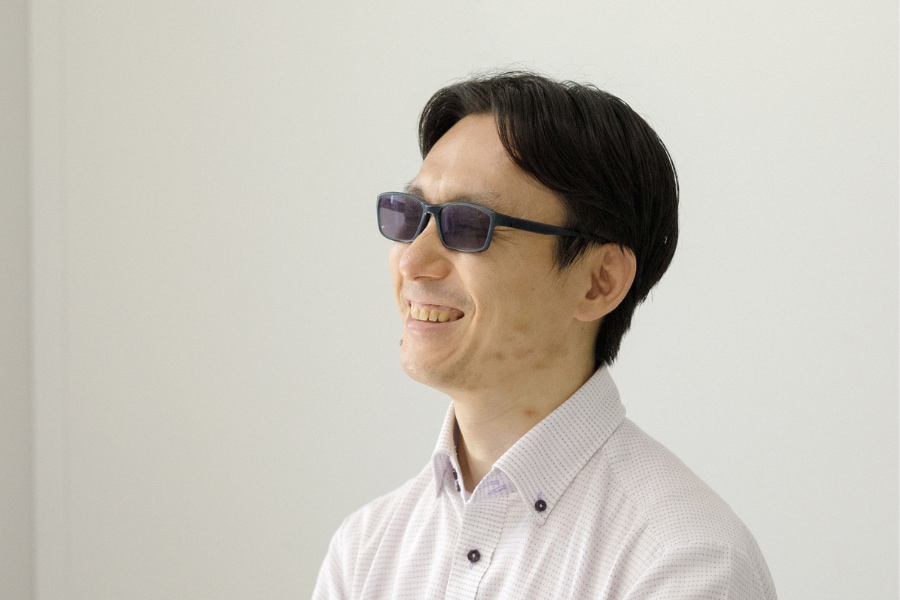
Junya Takahashi during the interview (Photo: Kosei Nozaki)
Junya Takahashi, 45, is one of the founding members of I-MIRAI and works in the Government & Public Corporation Information Systems Division at Hitachi, Ltd. He first felt something was wrong with his eyes when he was in kindergarten, and by the time he was in the third grade of elementary school, he realized that his vision had deteriorated even further.
Takahashi says: “It was in sixth grade when I definitively realized that I couldn't see properly. I couldn't follow the ball when I was playing basketball and volleyball.”
The ophthalmologist diagnosed him with retinitis pigmentosa, which is an incurable disease. Because of the progressive nature of the disease, he was told that he might go blind by the time he reached the age of 30, and in fact, Takahashi became totally blind not long after he turned 30.
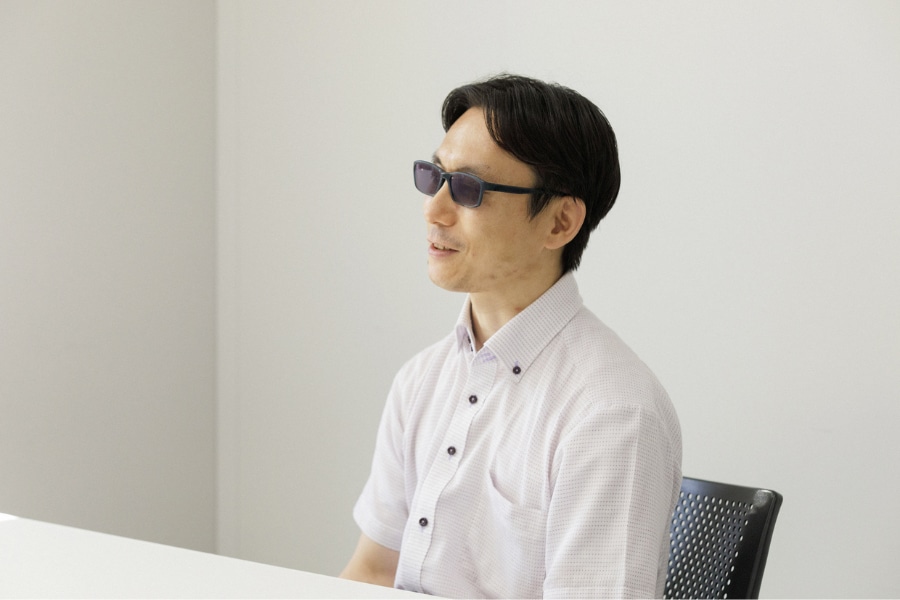
(Photo: Kosei Nozaki)
Takahashi was assigned to the software shipping department when he started working at Hitachi. As his eyesight deteriorated, he performed the same duties as other employees by using a magnifying glass and inverting black and white on his computer screen.
Now that he is totally blind, he shares his duties with other employees and manages the company's website. He uses a keyboard instead of a mouse when using his computer and he listens to text displayed on his computer screen using text-to-speech software.
In 2008, Takahashi began sharing information with two other Hitachi employees who are also visually impaired. They created a mailing list and shared information with each other that is helpful for the people with visual impairment. This became the seed of the I-MIRAI project.
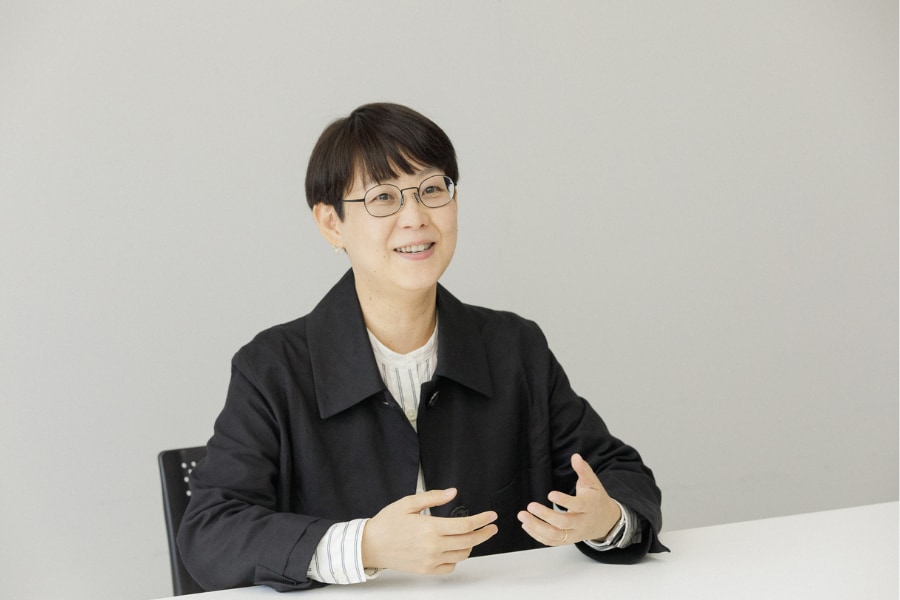
Kyoko Okita during the interview (Photo: Kosei Nozaki)
Sometime later, in 2019, Hitachi Kobe Laboratory, which promotes research into regenerative medicine, held a workshop with the theme of "Low Vision Care (support for people whose lives are hampered in some way by visual impairment)." In addition to researchers and ophthalmologists, employees with visual impairments also participated in the workshop.
One of the core members of the current I-MIRAI team, Kyoko Okita of Hitachi Kyoto University Laboratory at the Center for Exploratory Research, was in charge of planning the workshop.
Okita says: "During the workshop, an employee with low vision raised his hand and boldly asked, 'Isn't this discussion taking place from the perspective of someone who doesn't have a disability?' Hearing this, I thought, 'I want to hear more from this person,' so I went to see him later on."
As Okita listened to that employee, she realized that even though a number of employees have visual impairments, they have various degrees of vision, and hence each person is different.
Okita points out: "It is important as the first step to understand the individual reality of disabilities. In order not to make assumptions and decisions about disabilities based on one’s understanding, it is necessary to listen to a wide variety of people with disabilities and to gain a lot of insight. By doing so, one can begin to see the person rather than looking at the disability."
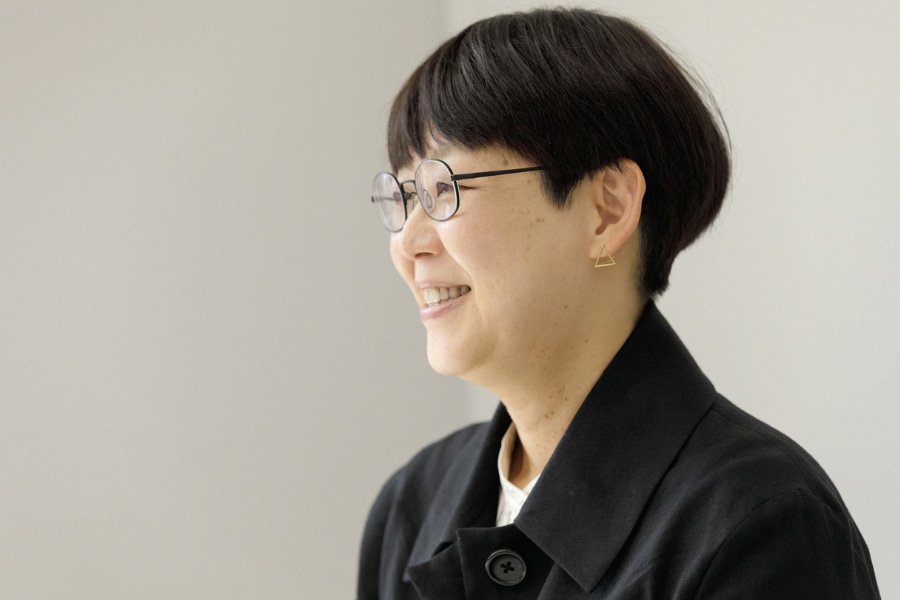
"Discrimination and prejudice of people with disabilities are born from a lack of understanding and knowledge."
(Photo: Kosei Nozaki)
In the two years since the project was launched, activities have steadily grown. Now, a workshop to promote understanding and raise awareness of disabilities and other issues alternates with a forum for exchanging opinions every two months.
Okita was particularly impressed by a presentation on the issue of unconscious bias in the workplace given by an employee with hearing impairment.
"It gave me great insight into how we can create a more-open workplace, nipping prejudice and discrimination at the workplace in the bud," says Okita.
In addition, improvements to the e-learning system and attendance management system running at the company were proposed. Contributions to the creation of a workplace environment in which people with disabilities could work comfortably were made by substituting text for image data that could not be read aloud and by providing support for the people with hearing impairment with subtitles and sign language at events.
The project team's activities were noticed by Hitachi management and moved the entire group.
The Valuable 500 movement was proposed at the 2019 World Economic Forum Annual Meeting held in Davos. This initiative aims to gain the endorsement of 500 CEOs worldwide in order to promote the advancement of people with disabilities. When a member of I-MIRAI suggested that Hitachi should join The Valuable 500, the president at the time responded by deciding that the Hitachi Group would also participate.
I-MIRAI has created an environment in which people with disabilities can work without barriers and Takahashi has high expectations for the future.
Takahashi says: "I hope that our project will one day create a society in which everyone can live without being self-conscious of their disability. I plan to work toward the day when this project will no longer be necessary."
The project members continue to work step by step to realize an inclusive society in which everyone can play an active role, regardless of disability.